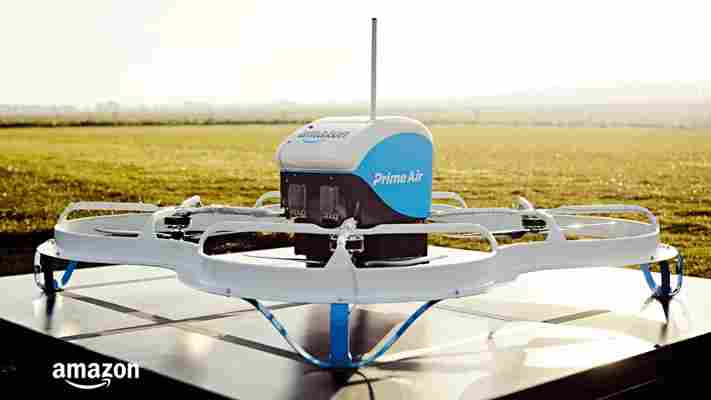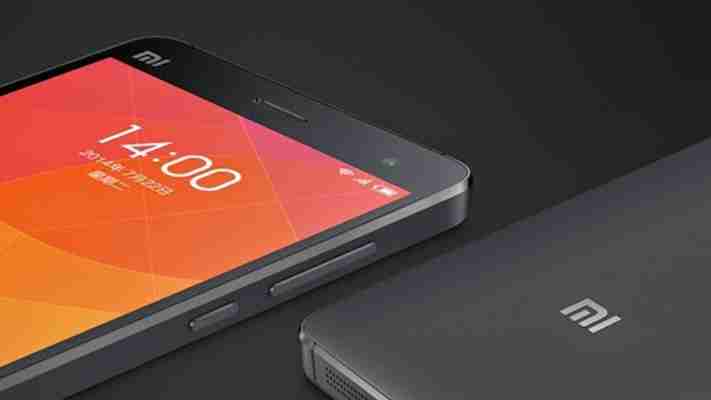While Amazon initially pulled off drone delivery as a viral publicity stunt back in 2013, today the company announced it successfully completed its first drone-powered shipment, with plans for more to follow in the coming months.

The e-commerce giant revealed it made its first airborne delivery last week on December 7, dropping an Amazon Fire TV and a bag of popcorn to a customer in the vicinity of Cambridge, UK. The shipment took approximately 13 minutes to complete after the order was placed.
For the time being, the service will support deliveries for small-sized items, giving priority to packages that weigh no more than five pounds and could be delivered within 30 minutes or less.
Amazon has decided to run its first trials in the UK since US regulations preclude the company from experimenting on American soil.
Unlike in the US, the e-commerce website can operate its drones beyond line of sight in the UK, making it a more fitting testing location. In addition to this, UK legislation further allows for pilots to operate more than one automated drone at a time.
While the drones are guided by GPS, customers can also place a special QR code gadget to indicate the precise landing destination.
Amazon has been toying around with airborne shipments for some time now. Back in 2015, the company teased its first aerial shipment carrier device, eventually getting the green light to run field tests in the UK several months later.
Given Google , Walmart and Domino’s are also in the race, it’ll be interesting to see which company can be the first one to take drone delivery to large scale.
Xiaomi unveils its new flagship smartphone, the Mi 4, with a metal frame
After a series of leaks and teases , popular Chinese smartphone manufacturer Xiaomi finally took the wraps off its new flagship smartphone, the Mi 4, today.

Xiaomi CEO Lei Jun took to the stage amid rapturous applause from its fans to announce the Android device, which takes a huge step up from its predecessor by finally using metal — though only for its frame. That is still a notch above its fellow Android rival Samsung, which only manufactures plastic devices. The Mi 4, however, looks uncannily similar to the iPhone.
The Mi 4 sports a 5-inch 1080p screen, and is powered by a 2.5GHz Qualcomm Snapdragon 801 quad-core processor. It comes equipped with 3GB of RAM and 16GB of internal memory and runs on a 3080 mAh battery. The Mi 4 also includes a 13-megapixel rear camera, and an upgraded front-facing camera of 8 megapixels.
The Mi 4 will be available for CNY 1,999 (approximately $322) for the entry-level 16GB model. The 64GB version will cost CNY 2,499 (around $403). The 3G versions will go on sale on July 29 (China Unicom) and August (China Telecom), while the 4G version will land some time in September. Xiaomi hasn’t said when the phone will be available outside of China, however.
The device supports 4G, but initially only the TD LTE standard that covers all three of China’s carriers. The company says support for the international FD LTE standard will come before the end of the year, so it seems like the phone may delayed going on sale outside of China.
Lei said that the Mi 4 is the fastest smartphone in the world, that’s the very same claim he made when the Mi 3 was launched in September last year. He also emphasized how much work was taken to balance the design of the Mi 4 with the battery power. The latest device can last around a day and a half without charging on a “normal” usage, he says. It also makes use of speedy charging, which can charge up to 60 percent in just an hour.
Xiaomi has made a name for itself selling smartphones packed with high-end specs at lower prices than its peers, including Samsung and HTC. It recently announced a new milestone after selling 26.1 million smartphones in the first half of this year, which already surpasses the number of units sold for the whole of 2013 .
The company is kicking its overseas expansion into high gear with recent launches in Malaysia , the Philippines and India , after it made its initial step beyond the Greater China region with a launch in Singapore early this year.
The Mi 4 is set to continue this momentum, as Xiaomi seeks to expand not only beyond its loyal fan base in China, but also conquer even more overseas markets. Lei previously stated that the company expects to ship 40 million smartphones for 2014, but he said the figure could reach as many as 60 million. Lei also expects Xiaomi to ship 100 million smartphones next year.
Images via Xiaomi
OnePlus One is a powerhouse Android smartphone running CyanogenMod, starts from $299
OnePlus , the startup founded by former Oppo executive Pete Lau , today unveiled its first flagship smartphone. Simply called the One, it offers top-tier components at a price even lower than Google’s high-value Nexus 5 .

As promised, the Android handset runs on a 2.5 GHz quad-core Qualcomm Snapdragon 801 processor, 3GB of RAM and a 3,100 mAh battery. Those specs are comparable to, or occasionally better than, this year’s batch of Android flagships, including the HTC One (M8) , Sony Xperia Z2 and Samsung Galaxy S5 .
The device looks attractive too, with a thin bezel around the edge and a larger chin for its home, back and menu capacitive buttons. OnePlus has opted for a 5.5-inch 1080p display, which comes in at 401 pixels-per-inch (ppi). The volume rocker and power button are positioned on the left and right-hand edge of the smartphone, a little over halfway up, to ensure users can reach them easily without adjusting their natural grip.
While not a bold design, the OnePlus One has an attractive look. The edges are rounded nicely and a minimal amount of branding has been added to the back. The dual-speaker grill on the bottom is almost identical to the Nexus 5.
Last year, Oppo partnered with CyanogenMod to build a version of its N1 smartphone with the community-driven Android ROM pre-installed. OnePlus is taking a similar approach with the One, pre-loading an exclusive version called CyanogenMod 11S . It’s based on Android 4.4 – the latest version of Google’s mobile OS – and features spartan square app icons. OnePlus says there are “no limits” to customizing the One and the stock CyanogenMod design will be offered through its theme engine and store.
In the lead up to its official unveiling, OnePlus has heavily promoted the camera in its first smartphone. The startup has opted for a 13-megapixel Sony Exmor sensor on the back, coupled with a 5-megapixel version on the front. Three competition winners were given a prototype unit to experiment with earlier this month, and some sample shots can be found on the company’s forums. The rear-facing camera can also shoot 4K video and 720p slow-motion video at 120 fps, which is fast becoming the industry standard for smartphones.
It’s already a compelling proposition on paper, but OnePlus is hoping the price of the One will make it a home run. The 16GB model will be available in ‘Silk White’ for $299/€269, while a 64GB variant in ‘Sandstone Black’ will sell for $349/€299. Both options are dramatically cheaper than the current crop of Android flagships and even trump the lower-specced Nexus 5.
It supports LTE and will be available initially in Austria, Belgium, Denmark, Finland, France, Germany, Hong Kong, Italy, Netherlands, Portugal, Spain, Sweden, Taiwan, the UK and the US, although the startup refrained from giving a firm release date. On April 25, however, it’ll offer the first 100 as part of a competition called ‘Smash’.
Examining the spec sheet, it’s difficult to pinpoint where, if anywhere, OnePlus has compromised with the One. If the build quality is sound and the software experience is on par with other high-end Android smartphones, the OnePlus One could be a tempting option.
